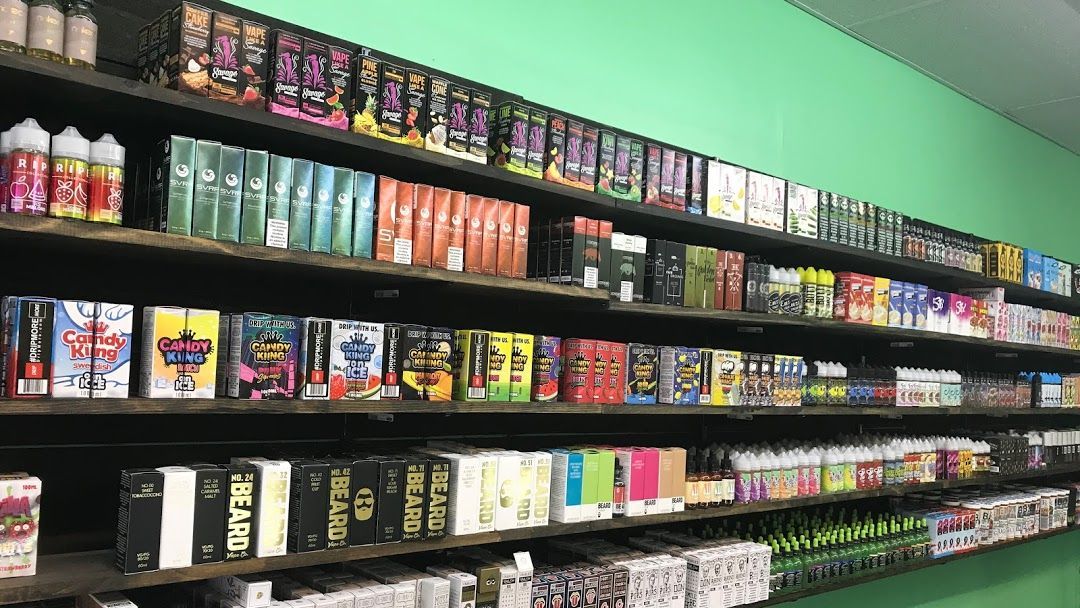Vaping isn’t a just an alternative to smoking cigarettes – it has emerged into more of a culture. As such, the vaping cultures have grown to include trade shows, fairs and conventions/expos. These trade shows offer an array of products, vendors, seminars, social interactions with other vapers, parties, gifts, vaping contests and other activities. These conventions present a unique opportunity for vape enthusiasts to mingle and network with other vapers and vape manufacturers.
The products available to buy include phone covers, headphones and earbuds, shirts, hoodies and hats, car holders, backpacks, skateboards, posters, lanyards and much more!
Today, because of smoking laws in numerous states, special bars and vape shops, similar to coffee shops, have been created where people gather to vape. There are also online forums to share ideas.
Vaping as an art
Back in the 1950s and early 1960s, movies presented a puff or ring of smoke as sophisticated and cool. Today, adolescent and young adults like to do vape tricks.
One of the reasons people do vape tricks is because they like to play and create. Vape tricks create a sense of excitement and adventure to life. Tricks range from blowing the biggest plume (cloud chasing) to finite smoke-filled bubbles.
One of the tricks, “The Dragon,” is impressive and has been said to make the vaper feel ferocious. The vaper blows out streams of steam from both sides of the mouth and nose – like a breathing dragon.
How do vapors get the biggest cloud? Vapors use highly powerful vape mods to produce the biggest, thickest and baddest plumes of vapor. Cloud chasing, now a competitive sport, has gone professional supported by sponsors.

Technology as art
Aspiring engineers spend their time wrapping coils, calculating resistances and finding new ways to combine the raw components into more powerful circuitry. Artists create paintings on vaping and the device. Traditional art then leads to decals, T-shirt screenings and other merchandising opportunities to promote the vaping industry.
Marketing
Any new product on the market begins by advertising - traditional and digitally. Young people are vulnerable to e-cigarette ads. In general, youth are exposed to advertising from multiple sources. What do those advertising numbers look like?
- 8 million youths are exposed through magazines or newspapers
- 6 million youths are exposed through television or the movies
- 5 million youths are exposed through internet
- 4 million youths are exposed at retail stores
E-cigarettes and vaping appeal particularly to millennia’s, males, people who tend to be angry, individuals without a strong sense of identity, artists, thrill seekers and people that like to impress. Typical ads built around the themes of sex, independence, and rebellion are used to attract an audience.
Manufacturers market to young adults (18 to 24-year-olds) with candy and fruit flavored e-liquids. This age group is more likely to use flavored tobacco products. Here is a sampling of e-liquid flavors: coffee, bubblegum, white chocolate, peanut butter cookie, peach ice cream, cinnamon spice, and strawberry pound cake to mention a few. There are over 7,000 flavors to choose from!
Who are these 18- to 24-year-olds?
Vape shops target the natural markets. Natural markets are a segment of people with a common interest such as goths, tech geeks, social cause and charity junkies, sports freaks and lovers, natural food and health conscious people, bikers, military, gym rats, same sex partners, foreigners from any land and former and recovering persons with addictions. In other words, anyone from all walks and backgrounds in life.

Vape shops have been found to take advantage of the adolescent population because of their lack of knowledge by selling them over-priced equipment or worse, a product that will make them sick.
Vaping has widely been promoted on social media platforms such as You Tube, Twitter, Instagram and Facebook. Many teens are vaping to boost their social image.
Effects on one’s health
According to the 2016 Surgeon General’s Report, e-cigarette use has become a public health concern for youth and young adults. The e-cigarette exposes users to harmful chemicals that can have adverse health effects. Nicotine exposure during adolescence can cause addiction and harm the developing adolescent brain.
E-juice is approved by the FDA as Generally Recognized as Safe for consumption. However, other chemicals found in e-cigarette liquid, flavorings and aerosols are not safe such as acetaldehyde, acrolein, formaldehyde and diacetyl.
Acetaldehyde is a colorless liquid that manufacturers use the chemical to make a range of products, including vinegar, perfume and flavorings. This chemical is reasonably anticipated to be a human carcinogen.
Diacetyl, a buttery flavored chemical often found in microwave popcorn has been linked with Popcorn Lung. Symptoms can include shortness of breath and coughing similar to Chronic Obstructive Pulmonary Disease (COPD).
Metal Toxins may leak from the heating coil element. Researchers at John Hopkins found these metals -lead, nickel, manganese, chromium and arsenic.
Health risks associated with vaping include the increase risks of developing cancer and heart disease, wound that won’t heal and ‘smoker’s cough’ in teens. Other side effects may include dry mouth, dry lips and sore throat; headaches, nausea or racing pulse; muscle pain, cramps and aches; allergic reaction to propylene glycol; weakened immune system; and damaged blood vessels.
The effects of nicotine can harm parts of the brain that control attention and learning. The behavioral risks associated with too much exposure to nicotine include increased risk of mood and attention problems.
The bottom line is, one puff of an e-cigarette is likely less toxic than a traditional cigarette, however no one really knows how many puffs the typical e-cigarette user is taking. Studies show that people are four times more likely to start smoking cigarettes if they vape and the act of vaping has been found by many to be addictive.
The Law
It is against the law to sell, purchase or use e-cigarettes and e-liquid for someone under age 18. Many Ohio colleges and universities are smoke-free campuses including Cleveland State, Ohio State, Kent State, Akron and Ohio to mention at few. E-cigarettes are prohibited on the premise of state buildings.
Many cities and states are raising the age to purchase tobacco to 21. In Ohio, these cities include Akron, Cleveland, Columbus and Euclid to mention a few.
A 2015 statistic by the Center of Disease Control found an astounding 75 percent of adult’s favor raising the tobacco age to 21 and 65 percent of those were aged 18 to 24.
Treatment Strategies
Cognitive Behavioral Therapy helps identify self-defeating and destructive thoughts and behaviors which often drive addiction to help identify triggers – people, places and things and teaches relapse-prevention skills and effective coping strategies.
Motivational interviewing helps clients explore and resolve their ambivalence about quitting or cutting back and enhance their motivation to make healthy changes.
Mindfulness-based smoking cessation treatments, clients learn to increase awareness of and detachment from sensations, thoughts and cravings that may lead to relapse. Patients learn techniques that help them tolerate negative emotions – including stress and cravings.
Teenagers have a variety of options to stop vaping. The options include calling toll free numbers 800-QUIT-NOW (800-784-8669); by visiting www.thisisquiting.com or text QUIT to 202-804-9884. Teens may also use the quitSTART app who want to stop smoking.
If your teenager is struggling with vaping or substance abuse, please call C&A at 330-454-7917.
RECENT POSTS












